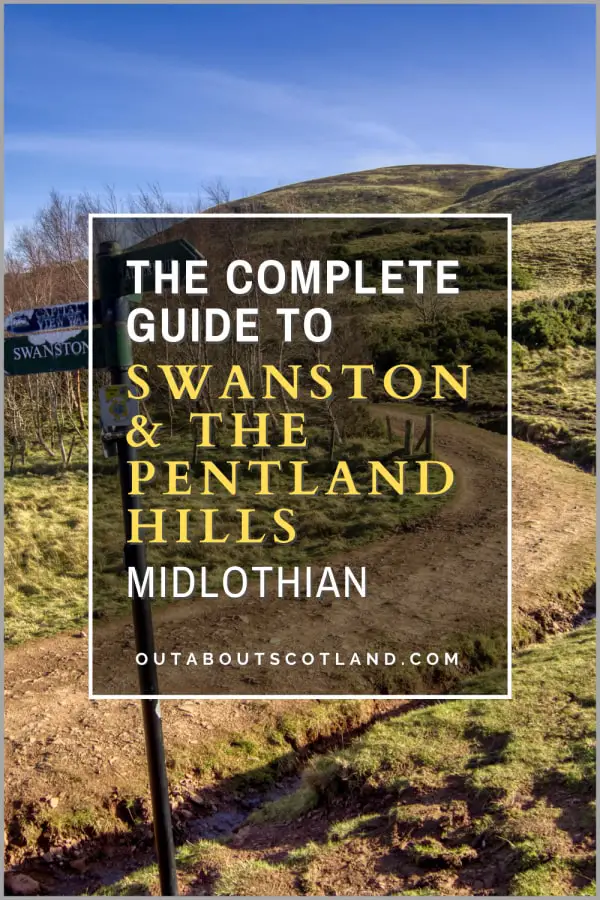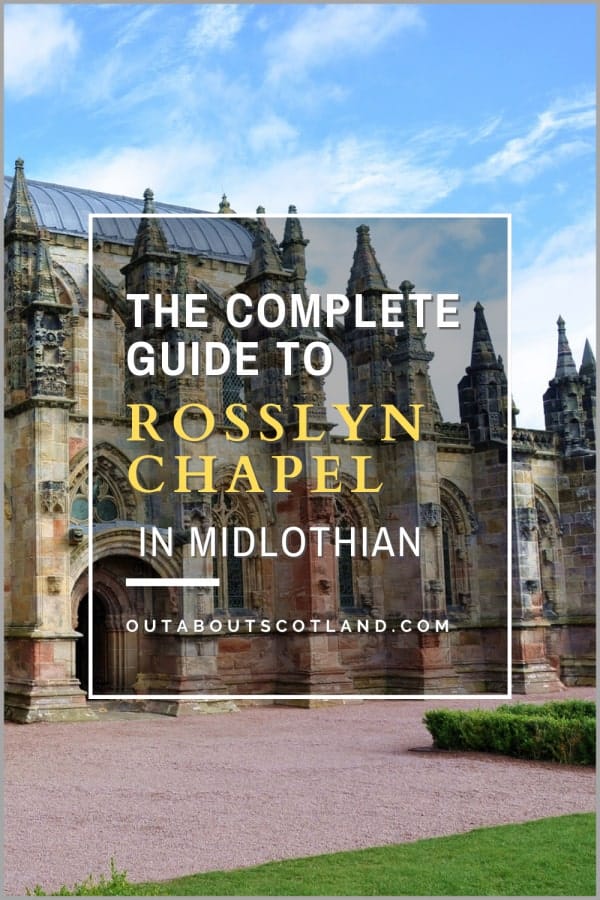Welcome to the hidden gem of Midlothian, Dryden Tower. Nestled amidst the lush farmland of the Dryden Estate near Bilston, this intriguing structure is a prominent landmark and is the highlight of the popular Roslin-Loanhead-Bilston circular walking trail.
The exact date the tower was constructed is lost in time but it’s believed to have been built sometime before 1852 either as a shelter, a monument, or a folly. Discover exactly how to find this unusual landmark with this complete visitor guide.
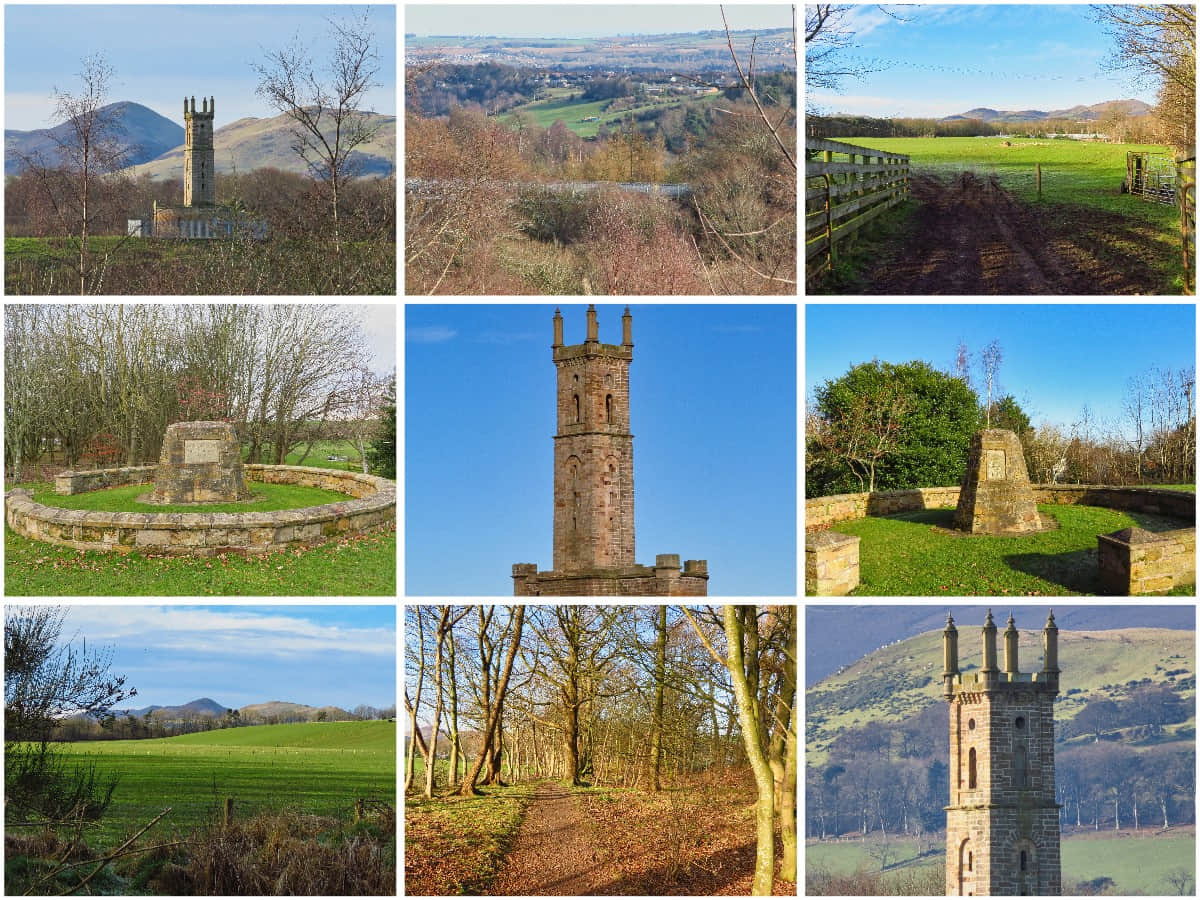
| Address: | Langhill Farm, Roslin, EH25 9ST |
| Opening Hours: | The walking route is accessible 24/7, 365 days a year. Dryden Tower is closed to the public. |
| Admission Price: | NA |
| Parking: | Roadside car parking in Roslin village. |
| Contact: | NA |
| Facilities: | Shops, cafes, and toilets in Roslin, Bilston, and Loanhead. |
| Photos | Virtual Tour |
Overview
On the edge of Edinburgh, between the world-famous Rosslyn Chapel and the rather less attractive Edinburgh city bypass, stands a stone tower in the middle of a field which is well worth a look as part of a countryside walk.
Dryden Tower is a three-story structure built from sandstone that was originally part of the sizeable Dryden Estate, once the powerbase for the influential Lockhart family. Even though the tower predates Lockhart, it is more likely that George Mercer, the estate’s subsequent owner who resided there until the mid-1840s, was the one who actually built it.
While the exact date it was built is unknown, Ordnance Survey first mentioned the tower in one of their maps in 1852, so it’s thought to have been built somewhere between that date and the time when George Mercer took ownership of the nearby Dryden House (now demolished).
So what exactly was the original purpose of Dryden Tower? Again, that’s unknown but it was likely either a rest area for the landowner after a day spent roaming around the estate, a memorial, or a folly with no particular purpose other than being eye-catching. Nonetheless, it’s an impressive sight, being constructed of a light-coloured sandstone and with mock fortifications around it’s walls, which are, for an unknown reason, in a semi-circular shape.
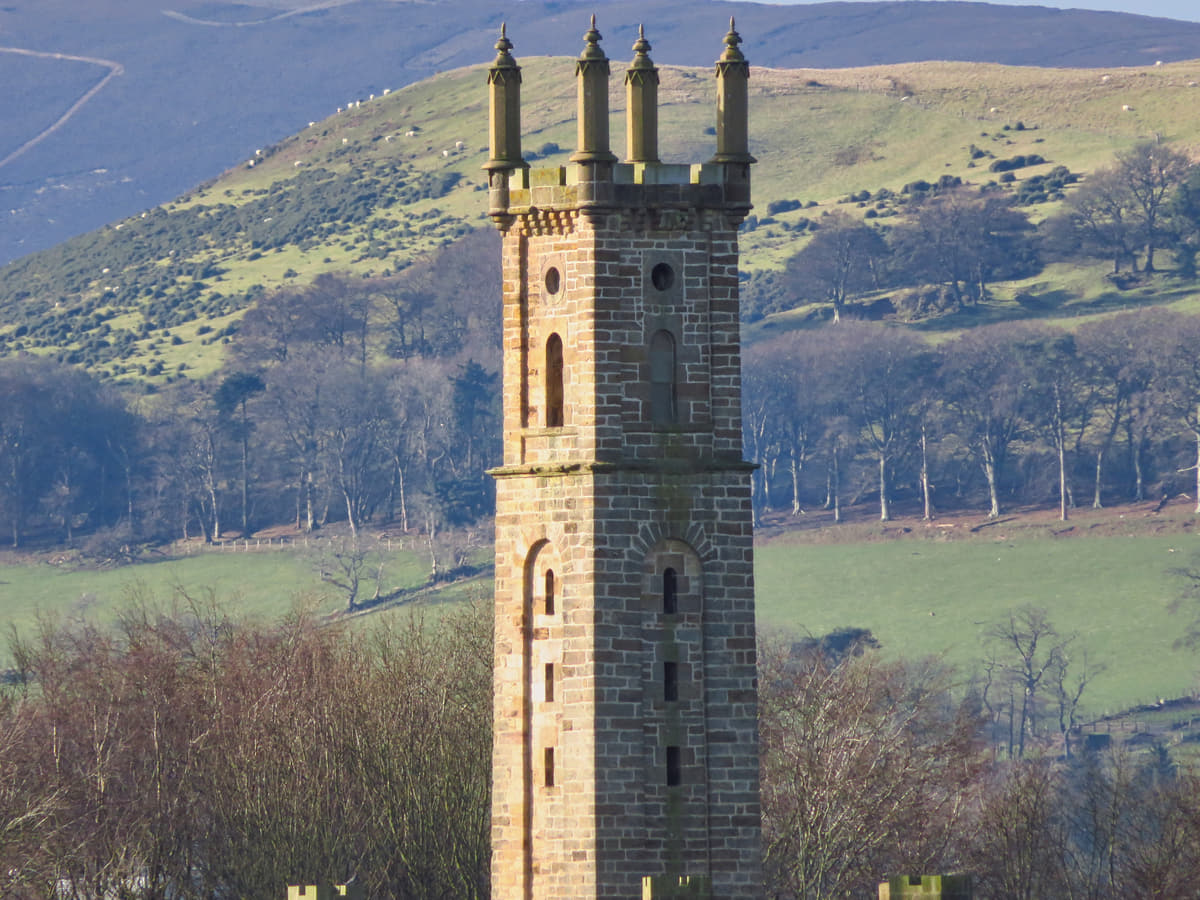
As already mentioned, the tower was most likely built as a Victorian folly so it doesn’t have much of a historical interest, but due to its age it has been designated as a category B listed building by Historic Environment Scotland.
It’s no longer possible to enter Dryden Tower as it has been cordoned off by a large metal barrier, which is a shame as a major restoration in 2014 restored it back to its former glory after years of neglect when much of the surrounding land was used for other works.
Like most of the collieries in the Lothians, the Bilston Glen Colliery has long since vanished and in its place is a nature reserve which offers a much-needed habitat for wildlife as well as giving locals a lovely spot to escape the noise of the surrounding industrial areas. The majority of the remainder of the former Dryden Estate is farmland, which means that seeing the tower is possible, but only by keeping to a designated path.
If you were able to get inside you’d find that it’s possible to climb a staircase all the way to the top which presents stunning views of the Midlothian countryside – something that will hopefully be permitted again sometime in the future.
Still, at least visitors can see the tower as they follow the walking route mentioned below which starts in the lovely village of Roslin and heads to the extremities of Loanhead and Bilston, taking in the amazing views from the Bilston Glen Viaduct which is another historic landmark that’s worth seeing.
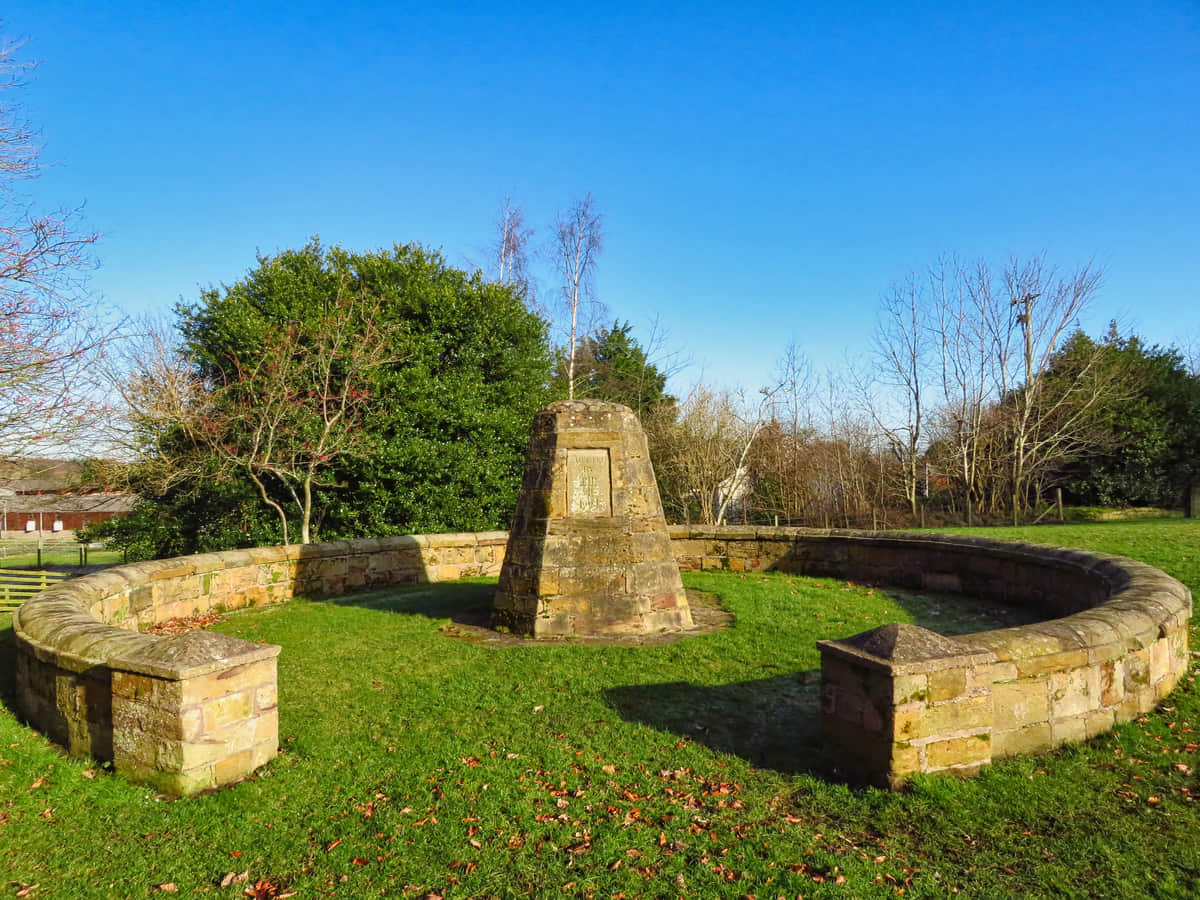
Protect Your Family From Scotland's Biting Midges
- Powerful, reliable protection for up to 8 hours
- Water- and sweat resistant
- Repels midges, mosquitoes, horse flies, sand flies, fleas and ticks
- Safe for use on adults, children over 30 months and pregnant women
- Non-sticky, moisturising with a pleasant fragrance
- Packaging may vary
Walking Route
Distance: approx. 4 miles. Time to complete: approx. 2 hours.
Starting from the war memorial in Roslin, walk along Manse Road for 0.6 miles till you reach Dryden Farm, where you’ll see a monument to the Battle of Roslin, then follow the cycle path signed Loanhead for 0.5 miles till you reach the Bilston Glen Viaduct.
Continue over the viaduct and take the left turn along the railway sidings that were once used for the Loanhead Colliery. Head through woodland for 0.5 miles and take the path to the left, signed for Bilston. At this point, there’s a steep slope where you can just about see Dryden Tower through the trees.
Continue around the back of the Bilston Glen industrial estate and follow the rough track to the Bilston Burn which will lead you into a woodland. Follow the sign for Roslin, cross a small stone bridge, and take the left path which leads out of the woods into fields.
Once you’ve veered around the first corner of the field you’ll be close to Dryden Tower so if you have a camera, now is the time to take some photos. Continue down the double-fenced path past the tower (take care because it’s very muddy) till you reach the entrance to Langhill Farm.
Take the left path through the gate down a grass track for 0.2 miles, then take the right-hand path up a line of trees bordering fields. Turn right onto a 4-way junction and follow the path back to the Battle of Roslin Monument. Return on the inbound route back to the Roslin War Memorial.
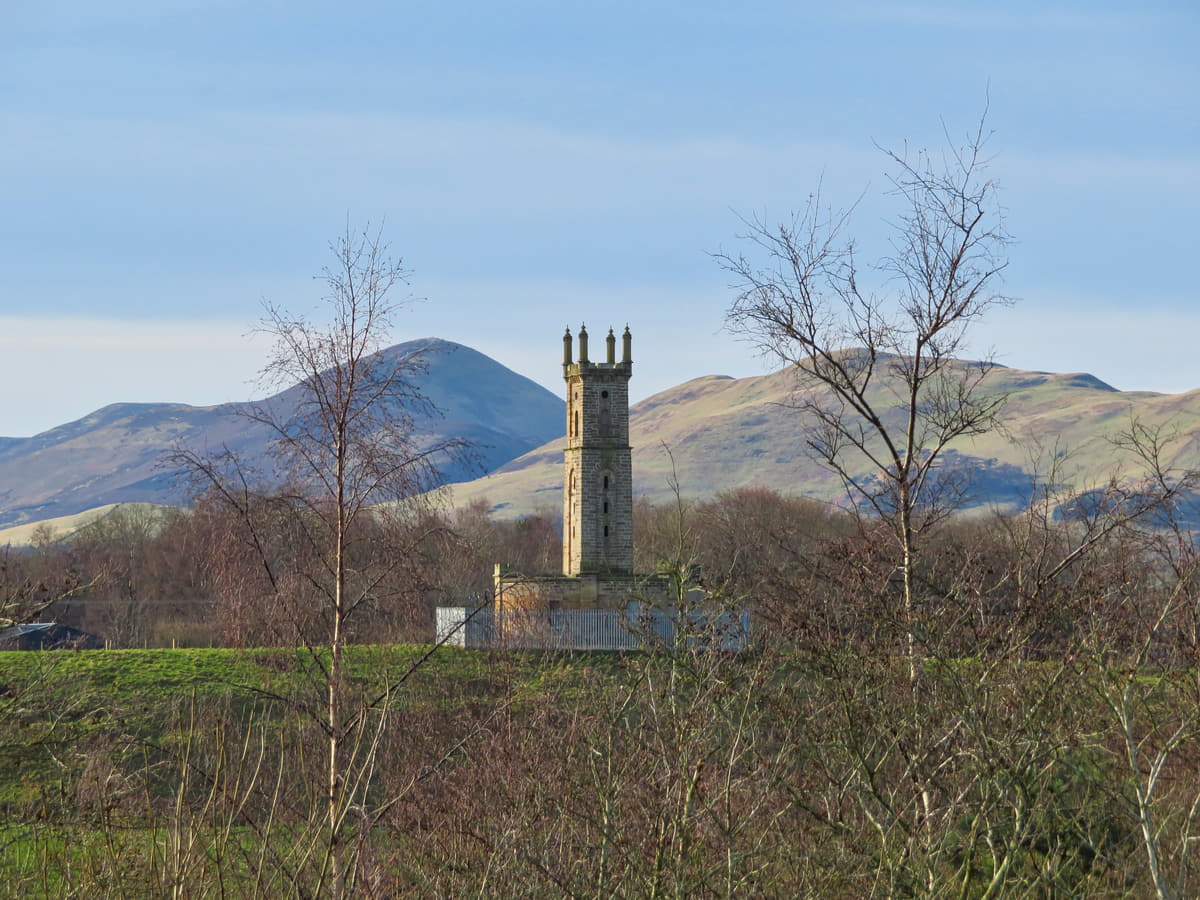
Book Tours in Scotland
The Highlights
1: Dryden Tower is an interesting landmark but you’ll also see two more historic points of interest along the way. The first is the Battle of Roslin Monument near Dryden Farm, which is a tribute to a relatively unknown battle in 1303 when English invaders were defeated. The second sight, the Bilston Glen Viaduct, opened in 1874 and is notable for its lattice ironwork and scenic viewpoint.
2: If you’re looking for an enjoyable walk in the countryside that’s just a stone’s throw from the always-busy Rosslyn Chapel, you won’t go far wrong with this route between Roslin, Bilston, and Loanhead. The walk takes visitors through fields and woodlands as well as a nature reserve, yet it’s just 1.5 miles from the city bypass.
Visiting Tips
1: Dryden Tower is an interesting landmark but it’s located in the middle of a field which you can only see from between a double fence that circles the perimeter. The tower is around 250 feet from the nearest fence, so if you want a close-up view, I recommend taking binoculars (link to binocular reviews) or a camera with a decent zoom lens.
2: If you’d like to extend this walk I recommend heading to Roslin Glen and following the picturesque footpath that follows the River North Esk. This footpath is a real gem and offers some amazing views, such as Wallace’s Cave. The AllTrails website has a good overview of the 5-mile circular route, as does the Ordnanceance Survey. See the’maps section near the top of this page to get access to the entire collection of OS Maps.
3: The path that runs along the edge of the fields near Linghill Farm becomes a muddy quagmire after a rainfall, so this is one walk where you’ll need to wear wellies or waterproof walking boots (link to boot reviews). The rest of the paths are okay for walking, but only the section from the viaduct to Roslin (right-hand side on the map) is suitable for a bike.

Things to Do Nearby
Rosslyn Chapel. Address: Chapel Loan, Roslin, EH25 9PU. Distance: 1.2 miles.
Rosslyn Chapel, which was used as a setting in Dan Brown’s The Da Vinci Code, is widely considered to be among Scotland’s most beautiful examples of religious architecture. The construction of the chapel began in 1446, and it’s known for its intricate stone sculptures that are thought to have connections to the Knights Templar.
Roslin Glen Country Park. Address: Roslin, EH25 9PX. Distance: 1.5 miles.
Encompassing the River North Esk, Roslin Glen Country Park offers diverse landscapes that include woodlands, rivers, and open grass spaces. The park is known for Roslin Castle and Rosslyn Chapel as well as the walking trails that weave through it.
Old Penicuik House. Address: Penicuik, EH26 9LA. Distance: 7 miles.
Old Penicuik House is a 17th-century mansion set within a 500-hectare estate near the Pentland Hills. The house’s Palladian architecture is renowned, but a fire in 1899 destroyed it, leaving only its shell. A recent restoration project has stabilised the structure, allowing visitors to explore the house as well as its extensive grounds.
Straiton Pond Local Nature Reserve. Address: Loanhead, EH20 9QX. Distance: 4.2 miles. The Straiton Pond Local Nature Reserve is a prime example of how nature has reclaimed industrial land because it is close to Loanhead and Straiton Retail Park. Once used to supply clay to nearby brickworks, the reserve is now a serene location that’s popular with locals for picnics, strolls, and bird watching.
Roslin Gunpowder Factory. 9PX, B7003, Roslin. Distance: 2.2 miles.
The Roslin Gunpowder Factory played a crucial role in the Industrial Revolution, providing explosive material for mining and construction. The factory was known for its unique ‘powder houses’ where the gunpowder was stored safely. Today, the site is a picturesque woodland, with remnants of its industrial past still visible amongst the trees.
Book Tours in Scotland
Frequently Asked Questions
Why is Rosslyn Chapel so famous?
The chapel’s popularity soared after it was featured in the 2003 best-selling novel ‘The Da Vinci Code’ by Dan Brown and its subsequent 2006 film adaptation starring Tom Hanks. In the book and movie, the chapel is portrayed as the hiding place of the Holy Grail, piquing global interest and leading to a significant increase in visitor numbers.
Where was Bilston Glen Colliery?
Bilston Glen Colliery was located in Loanhead, Midlothian, around 6 miles south of Edinburgh. The colliery opened in 1952 and was once one of the largest and most productive coal mines in Scotland.
However, due to economic changes and industrial disputes, the colliery was closed in 1989. Since its closure, the area has been transformed into the Bilston Glen Industrial Estate, and the former spoil heap has been landscaped into a local nature reserve.
Is Loanhead a town?
Loanhead is a town located in the county of Midlothian, Scotland. It’s situated about six miles south of Edinburgh and is historically a coal-mining and stone-quarrying town.
It has evolved over the years and is now home to a diverse range of businesses and residential areas. Its close proximity to Edinburgh makes it a popular place for commuters while still offering the benefits of a small town.
How old is Dryden Tower?
The exact construction date of Dryden Tower is unknown, but it’s believed to have been built sometime before 1852, either as a monument to the Jacobites, a shelter for the Dryden Estate landowners, or a folly, which is a structure with no main purpose other than its appearance.




